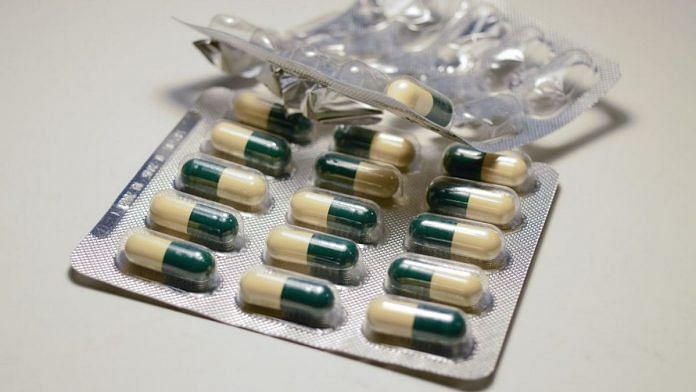Bengaluru: Antibiotic drugs used to treat bacterial infections are increasingly becoming ineffective globally. Infectious bacteria that these drugs target have developed resistance to them over time, much like mosquitoes did with DDT and rendered it ineffective.
However, antibiotics are not completely ineffective just yet, they are simply less effective than they should be.
As the World Health Organization (WHO) observes Antibiotic Awareness Week from 18-24 November this year, here is a look at the factors contributing to antibiotic resistance, and how the WHO is tackling it globally.
‘Overuse and misuse’
Antibiotic resistance is a subset of antimicrobial resistance (AMR). While the former only deals with bacteria, the latter encompasses infections caused by bacteria, viruses, and fungi.
This is one of the reasons attributed to the increase in antibiotic resistance: the use of antibiotics for illnesses where they are not effective, such as the common cold.
In many countries, doctors still prescribe antibiotics for virus-induced illnesses, inducing unwanted and unnoticeable side-effects like rashes, and, of course, antibiotic-resistant infections.
“The emergence and spread of resistant bacteria is accelerated by the overuse and misuse of antibiotics in human and animal health,” WHO regional director for Southeast Asia, Poonam Khetrapal Singh, said in a statement.
AMR and antibiotic resistance are becoming a bigger public health menace, especially as the world becomes more interconnected and travel becomes more affordable.
The resistant microbes and bacteria are found everywhere around us — in water, soil, air, food, pets, and even in people. Poor sanitary conditions are a prime suspect for enabling their transmission.
Resistance has been seen in drugs used to treat pneumonia, infections in newborns and ICU patients, urinary tract infections (UTI), gonorrhoea, influenza, tuberculosis, malaria, and even HIV.
Also read: Indians pay 70% less than the global median to buy medicines, study finds
WHO plan
Combating antimicrobial resistance has been one of WHO’s top priorities over the last few years.
“All Member States have developed a national multisectoral action plan to address AMR. They are now implementing them. Each Member State has signed on to the Global Antimicrobial Resistance Surveillance System, a key initiative that will advance AMR-related research,” said Singh.
“Region-wide, the Tripartite Collaboration on AMR, which comprises WHO, the Food and Agriculture Organization (FAO) and the World Organization for Animal Health (OIE), is addressing vulnerabilities in the human and animal health sectors, as well as in agriculture. Ensuring antibiotics are used rationally continues to be a core priority,” she said.
This progress in the Southeast Asian region must be sustained and accelerated, she added.
Beyond the region, WHO’s ‘Global action plan on antimicrobial resistance’ has five objectives: improving awareness and understanding of AMR, strengthening surveillance and research, reducing the incidence of infection, optimising the use of antimicrobial medicines, and ensuring sustainable investment in countering AMR.
In September 2016, the heads of state at the United Nations General Assembly in New York made a public commitment to work towards these goals.
Also read: Scientists discover first new HIV strain in 19 years



